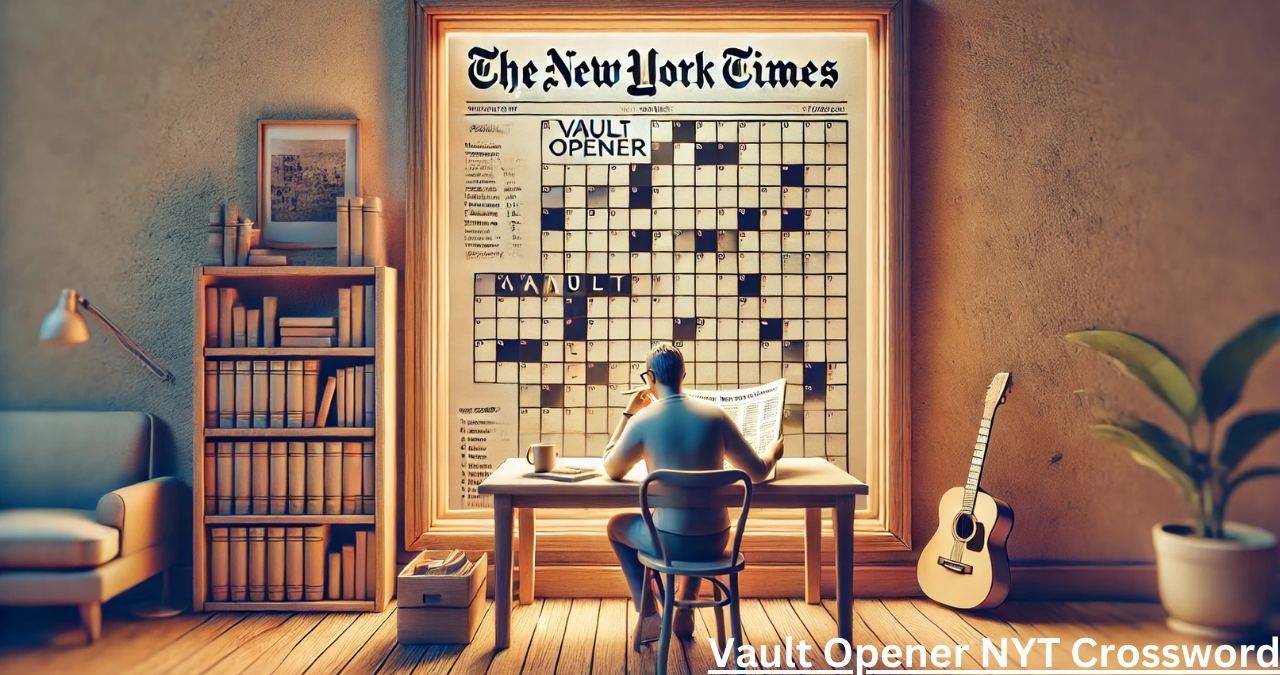Vault Opener NYT Crossword puzzles are more than just a pastime; they’re a battle of wits, a dance between the puzzle constructor and the solver. Among the most revered puzzles worldwide are those published in The New York Times. Known for their wit, complexity, and cultural relevance, these puzzles challenge and delight millions of solvers each week. One type of clue that often stumps even seasoned crossword enthusiasts is the “vault opener.” This article will delve into what such clues entail and how you can master them, enhancing your crossword-solving prowess.
Understanding these clues is not just about solving a puzzle; it’s about unlocking a part of the English language that is often overlooked. The term Vault Opener NYT Crossword the context of crosswords might not refer to a physical key or lockpick, but rather, it represents a metaphorical device used to unravel the complexities hidden within the puzzle’s theme or its most challenging clues. By the end of this guide, you will not only be better equipped to tackle the New York Times crossword but any crossword that comes your way.
Understanding Crossword Clues

Crossword puzzles are a unique blend of language proficiency and cultural knowledge, layered with a twist of the constructor’s creativity. Beginners might start with direct clues, which are straightforward definitions of the answers. As one advances, the clues become more intricate, employing indirect statements, wordplay, and even homophones, where words that sound alike but have different meanings or spellings are used cunningly.
Cryptic clues, commonly found in British crosswords but occasionally appearing in American puzzles like the NYT, take this a step further. These clues typically involve anagrams, hidden words, deletions, and reversals. Understanding the type of clue you are dealing with is crucial in choosing the right approach to solve it. For instance, a clue that reads “Revolutionary pet sounds (5)” might seem nonsensical at first, but breaking it down reveals it to be a cryptic description where the answer, “notes,” is a reversal (revolutionary) of “stone” (pet sounds).
Deep Dive into the “Vault Opener” Clue
The term “Vault Opener NYT Crossword” could be deceptive in a crossword puzzle. It might suggest a physical object used to open a vault, but in crossword lingo, it could refer to a key answer that unlocks the theme of the puzzle or a particularly puzzling word that once solved, opens up several other answers. Historical instances in the NYT crossword might show “vault opener” as a clever play on words or a pivotal hint that guides the solver through a maze of intersecting answers.
To tackle such clues, one effective strategy is to consider them in the context of the puzzle’s theme. Often, the answer relates metaphorically or literally to an opener, such as “key” or even more abstract concepts like “clue” or “insight.” Analyzing past puzzles where similar clues have appeared can provide valuable insights into the constructor’s thought process and common patterns or themes that may emerge.
Strategies for Advanced Crossword Solving
Improving at crossword puzzles requires more than just a good vocabulary; it demands a strategic approach and a toolbox of solving techniques. One fundamental strategy is to fill in the easiest clues first, providing a framework of letters that can help in deciphering more difficult clues. Another advanced technique is to learn the common tricks and wordplays that constructors love to use, such as using “flower” to mean a river (something that flows).
Engaging with the community of solvers through forums and discussion boards can also enhance your skills. Many avid solvers share their approaches and insights, which can be incredibly helpful. Additionally, online resources like Vault Opener NYT Crossword solvers, thesauruses, and even databases of past NYT puzzles can be invaluable tools in your quest to become a master puzzle solver.
Conclusion
Mastering the “Vault Opener NYT Crossword puzzles is a journey of linguistic discovery and mental challenge. The skills you develop in deciphering these puzzles translate into greater language sensitivity and problem-solving abilities. Remember, each puzzle solved is not just a personal victory but a step towards becoming a part of a grand tradition of crossword solving.
FAQs
What exactly does “vault opener” refer to in a crossword puzzle?
In the context of crosswords, a “vault opener” is often a clue or answer that unlocks the theme of the puzzle or helps to solve several other clues indirectly.
Are there any specific strategies for solving cryptic clues in the NYT crossword?
Yes, familiarizing yourself with common cryptic techniques such as anagrams, reversals, and double definitions can be particularly useful.
How can I improve my overall crossword solving skills?
Regular practice, learning the common patterns and clue types used by constructors, and engaging with other solvers can all improve your skills.
Where can I find resources to help with difficult NYT crossword puzzles?
Websites like XWord Info, Rex Parker’s blog, and the official NYT Crossword forum offer solutions, discussions, and insights into daily puzzles.
Can understanding the constructor’s style help in solving puzzles more effectively?
Absolutely. Each constructor tends to favor certain themes, wordplays, and clue types, so recognizing their patterns can give you a significant advantage.






